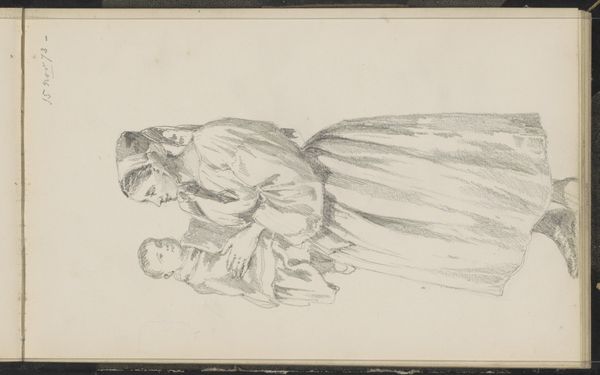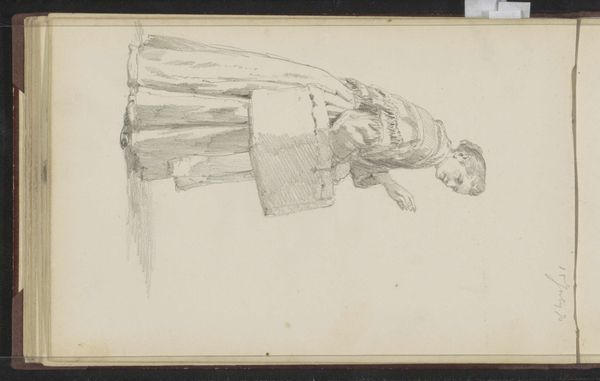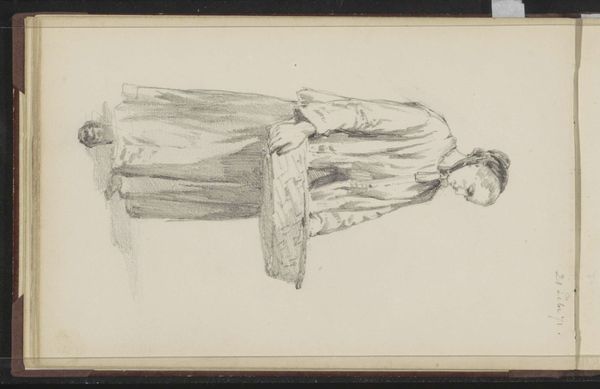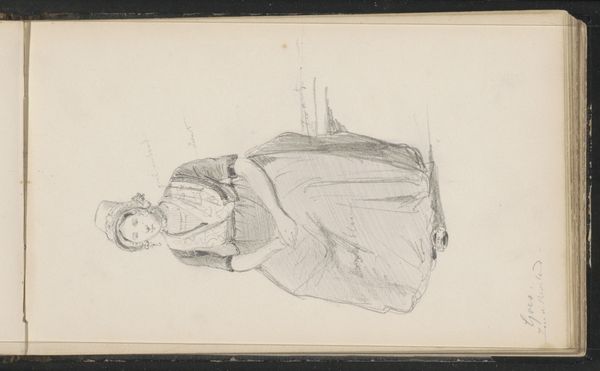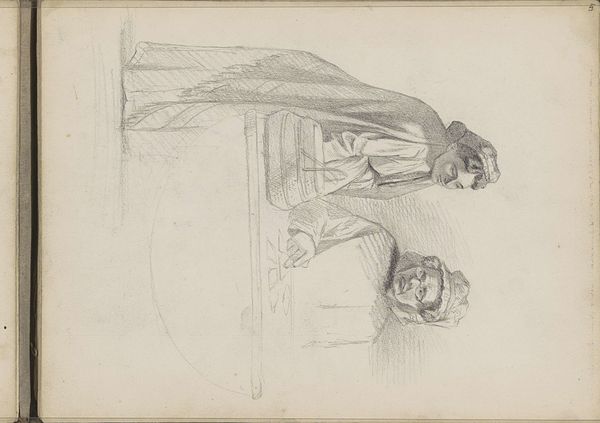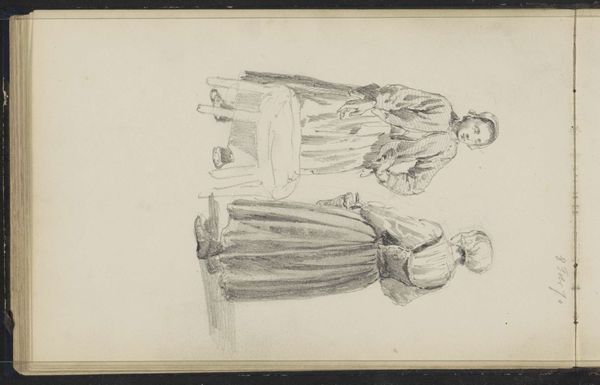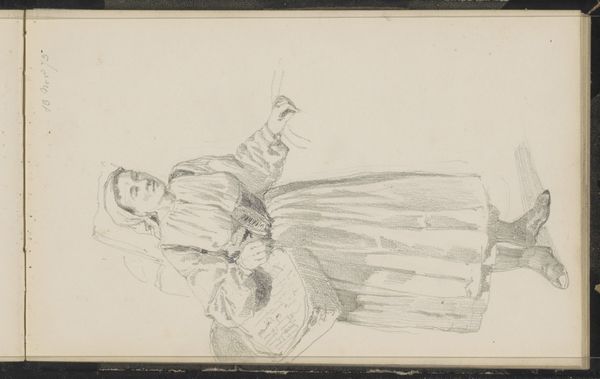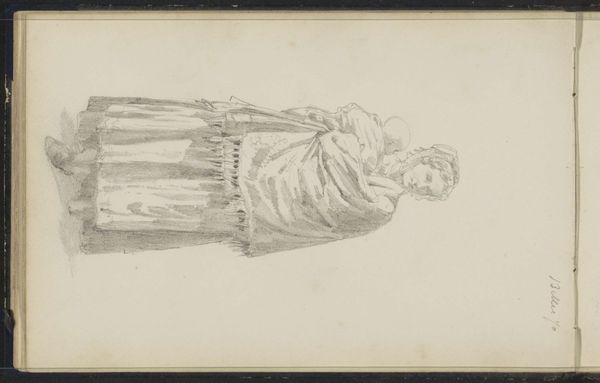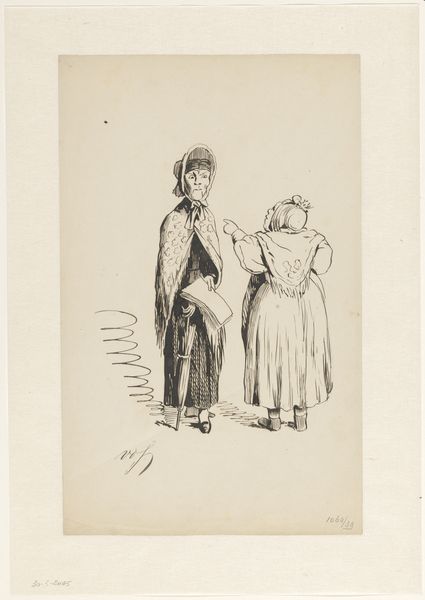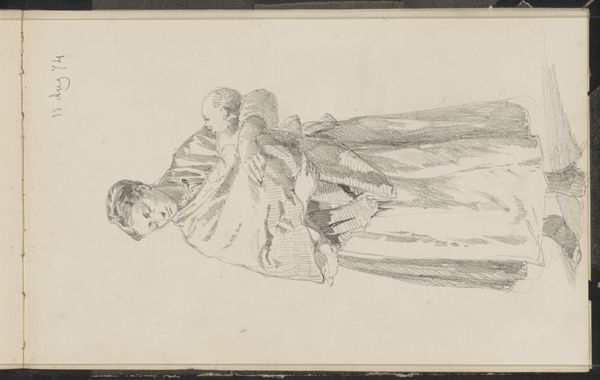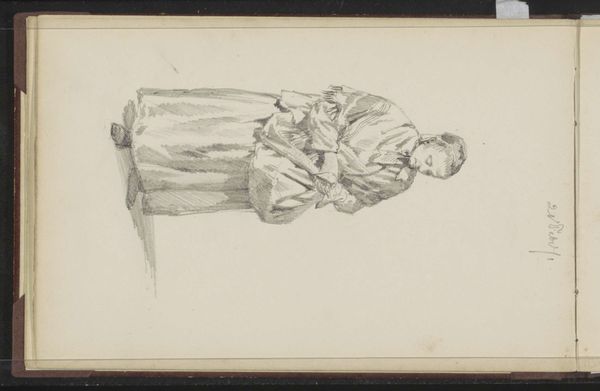
painting, watercolor
#
portrait
#
table
#
painting
#
oil painting
#
watercolor
#
genre-painting
#
watercolor
Copyright: Rijks Museum: Open Domain
Editor: This is "Twee vrouwen bij een tafel," or "Two Women at a Table," thought to be from 1871 or 1872, by Cornelis Springer. It’s watercolor and oil on paper, currently held at the Rijksmuseum. It feels very intimate, like a glimpse into a private moment. What do you see in this piece? Curator: Well, instantly I am drawn to the interplay of shadow and light, how it creates almost two separate spheres of existence within one frame. Notice the woman at the table, sketched with minimal detail – almost as a specter. This deliberate artistic choice speaks to me of transience. Editor: Transience? How so? Curator: The use of watercolor here, its delicate washes and unfinished quality, reinforces this ephemeral feeling. Watercolors, traditionally, suggest sketching. Now look at the table... What symbols do you make of this "everyday object," in light of our reading on women at this period? Editor: Hmmm... maybe this points to women being relegated to these "domestic" roles in 19th century European culture, with this painting underscoring social restrictions and limited options? Curator: Precisely! This "table," and the tasks it supports becomes the altar. And her place at the altar is assured with these washes. What a profound commentary on their societal positioning. It transforms the seemingly mundane into a powerful statement about the lives and limitations placed upon women during that era. This composition allows to grasp the historical situation of the women with all it implied for this segment of the society. Editor: That's a really fascinating way to look at it. I never considered the cultural weight that could be loaded into something as simple as a table and its inhabitants! Curator: Art opens these dialogues. That is its purpose! Thank you for guiding us there with your questions.
Comments
No comments
Be the first to comment and join the conversation on the ultimate creative platform.
